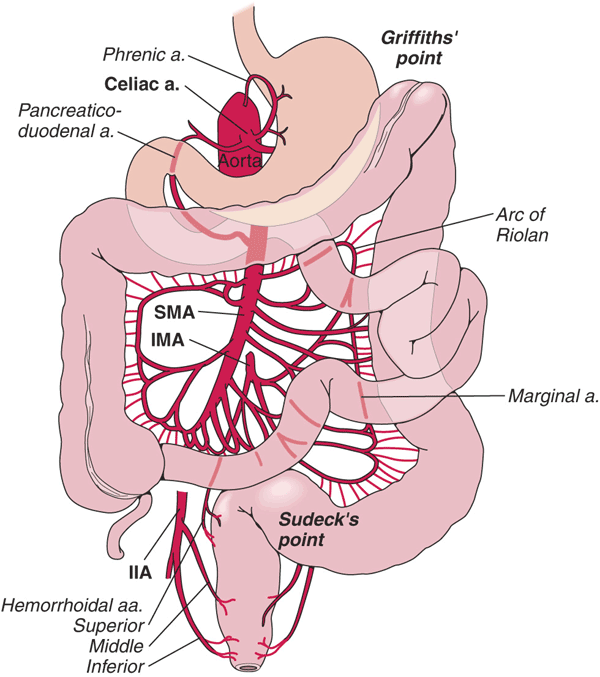Sandbox 2: Difference between revisions
Jump to navigation
Jump to search
Aditya Ganti (talk | contribs) |
Aditya Ganti (talk | contribs) |
||
| Line 47: | Line 47: | ||
| colspan="4" style="padding: 5px 5px; background: #F5F5F5;" align="center" |ɸ -Except lower rectum, which drains into the systemic circulation. | | colspan="4" style="padding: 5px 5px; background: #F5F5F5;" align="center" |ɸ -Except lower rectum, which drains into the systemic circulation. | ||
|} | |} | ||
[[Image:Colonic blood supply1.gif|thumb|center|300px|Source:]] | [[Image:Colonic blood supply1.gif|thumb|center|300px|Source:]] | ||
Revision as of 18:20, 20 November 2017
Lower GI bleeding is defined as any bleed that occurs distal to the ligament of Treitz.
Incidence
- In the United States the incidence of LGIB ranges from 20.5 to 27 per 100,000 persons per year.
Age
- There is a greater than 200 fold increase from the third to the ninth decade of life.
Classification
- Lower GI bleeding can be classified into 3 groups based on the severity of bleeding:
- Occult lower GI bleeding
- Moderate lower GI bleeding
- Severe lower GI bleeding
Blood supply
- The SMA and IMA are connected by the marginal artery of Drummond.
- This vascular arcade runs in the mesentery close to the bowel.
- As patients age, there is increased incidence of occlusion of the IMA.
- The left colon stays perfused, primarily because of the marginal artery.
| Lower GI Tract | Arterial Supply | Venous Drainage | |
|---|---|---|---|
| Midgut |
|
|
|
| Hindgut |
|
|
|
| ɸ -Except lower rectum, which drains into the systemic circulation. | |||
